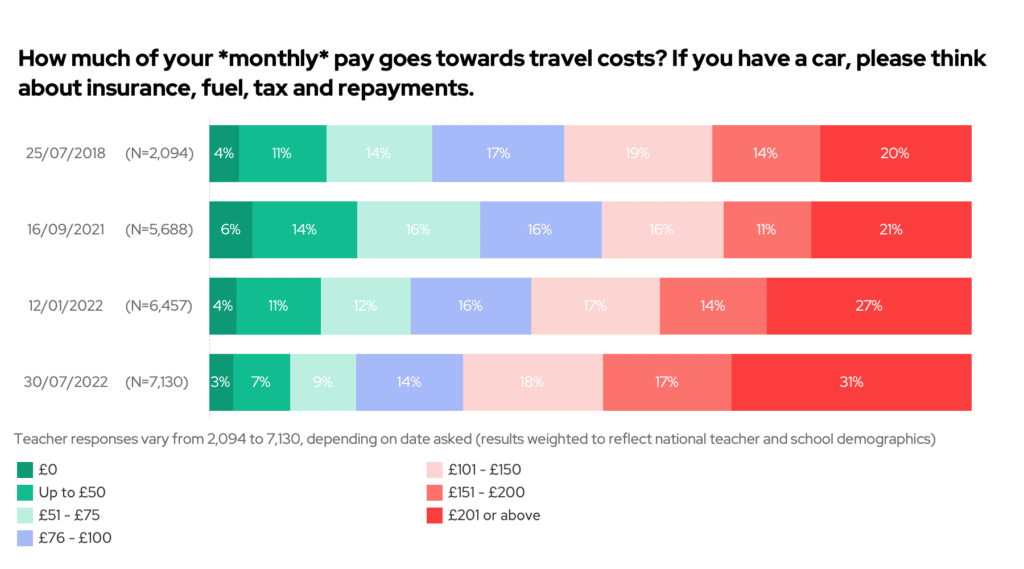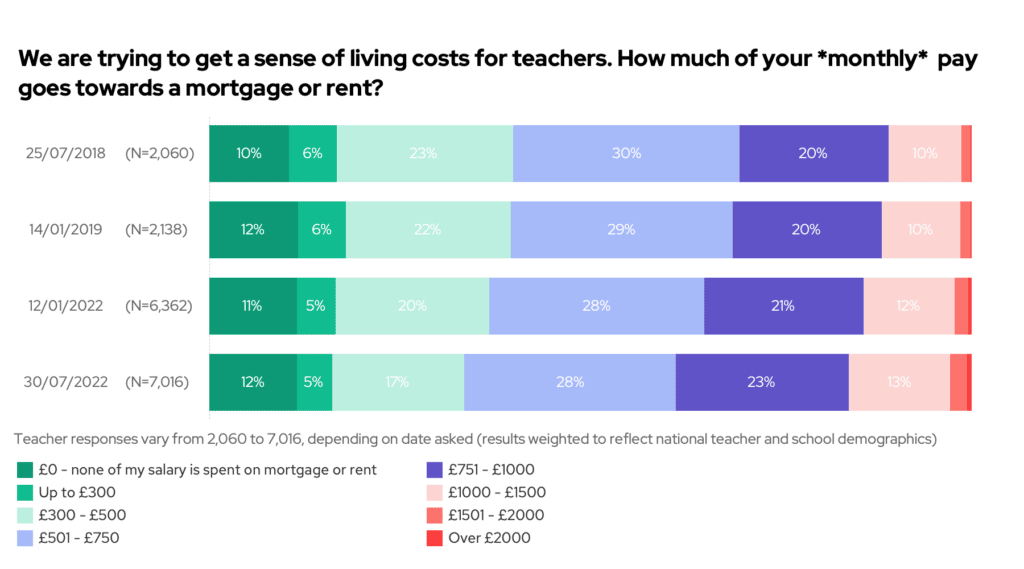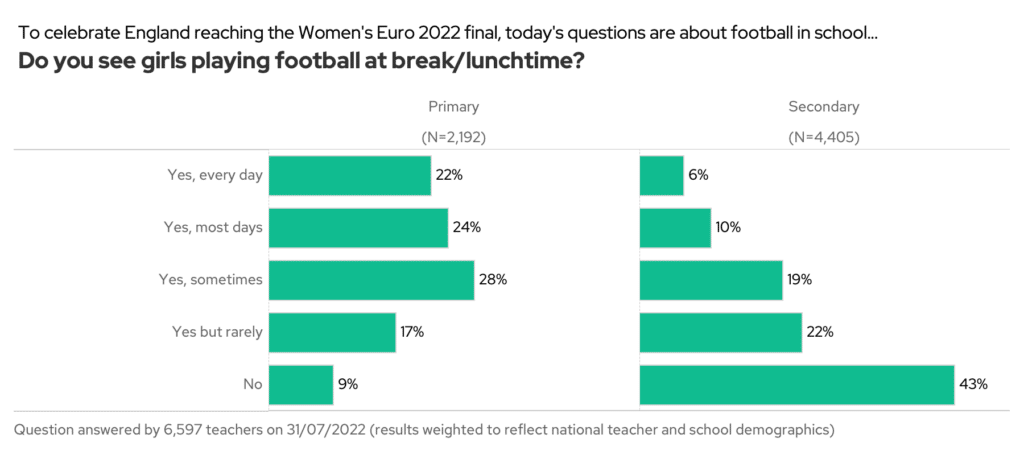It’s finally the holidays (woo!) and we hope you are enjoying a well-deserved break. Getting to relax for several weeks when no one is in school is one of the great perks of the job and we hope you’re leaning in to the joy.
It’s with regret that we find ourselves in a position this week of having to interrupt the hols to talk about teacher pay and burgeoning issues around the cost of living. However, many of you wrote, asking that we look at it now. Mainly because things are looking a bit worrisome.
So, what do we know about the school funding situation?
As mentioned last week, the government has announced a pay deal giving an average 8% rise to Early Career Teachers, 6.4% to mainscale teachers, and 5% for upper scale and school leaders. A majority of teachers felt 8% was fair; only one in five felt 5% was equally so.
On top of the pay rises for teachers, schools are grappling with three other issues:
- Inflating energy costs
- Pay rises for teaching assistants (of up to £2,000), and
- Changes to the legality of term time-only contracts
Plus that’s on top of years and years of cutbacks in many other aspects of school life.
Worryingly, the government is not giving enough additional funding next year to make up for these cost pressures. Leaders are therefore in a difficult position of having to find the money for the pay rises and energy costs from… well, where?
The effect on school budgets
After the pay announcements, we asked over 1,400 senior leaders to answer an extra set of Teacher Tapp questions about the impact on budgets. The results are grim.
- On average, leaders estimate the pay rises alone are going to cost £96,000 for primary schools and £224,000 for secondary schools.
- 59% said the school’s budget for next year won’t cover the cost. A further 29% weren’t sure.
- 42% of leaders said they will now need to consider staff cuts, with teaching assistants the group most likely to face redundancy (or non-replacement).
Given that back in June around half of teachers said their school had already cut back on teaching assistants, it means the likelihood of classroom support is getting slimmer. For schools with a high proportion of children with additional needs, cutbacks will be particularly hard to achieve.
Beyond Staff: Cutting of resources, trips and building works
Over 400 leaders also answered an open-text question about what else they could cut from their budgets. Many simply wrote: “there’s nothing left I can cut”.
Beyond that, the most common answers were curriculum resources (e.g. textbooks, subscriptions, stationery), planned building and maintenance work, and trips. Given Ofsted’s focus on curriculum, given that building works are often necessary to improve energy efficiency, and given children have already been stuck inside without any trips for the past two years, none of these are easy choices for leaders. But what else can they do?

What about teachers and the cost of living?
In the autumn, when people start to realise the scale of the issue, the government might push back by saying that schools wouldn’t need to cover such costs if teachers hadn’t demanded a pay rise.
Indeed, it’s possible that the unions might ballot for industrial action with a view to securing more pay increases in the autumn. A potential angle for whoever becomes the next Prime Minister might be to argue that teachers are in an okay financial position and don’t need more money.
But, how are teachers doing in terms of the cost of living?
We’ve been collecting data on teacher living costs since 2018, and you can see that costs are rising for teachers (as for everyone else). Back in 2018 just 20% of teachers were spending more than £200 a month on travel, that’s now 31% – a huge increase. Fuel rises will mean that teachers who commute by car, particularly those who drive to schools in more remote areas, are likely shelling out much more now than in January (and things had already got worse by then!) While office workers have typically shifted to staying at home a few days per week, for teachers, that’s not a thing! Hence the commuting costs will fall heavily on them compared to some other professions.

We can also see that housing costs are nudging upwards. Not as substantially as with fuel, but back in 2018, 39% of teachers spent less than £500 a month on rent, now that figure is down to 34%. The proportion spending upwards of £750 has also gone up, from 31% to 38%. As interest rates increase on mortgages we are also expecting to see this rise over the next year.

All these pressures are shifting the extent to which teachers feel they have enough money to live on and save.
In 2019, we asked teachers if their household had enough money to live on and save. The reason we use this wording is that it reveals whether people are able to cover all their basics ‘and a bit more’. Frankly, it’s debatable whether our question had the best wording and whether it’s even for everyone (my ‘live on’ might be more like your ‘luxury’ etc). But the crucial thing is that we repeat the same wording so we can see relative change over time. The variation in opinion is likely the same between the two time points, so that cancels out. And it means that whatever the philosophy of the question, we can genuinely see if people report that things are getting worse.
And, SHOCK: they’re getting worse.

Both groups of teachers – those with children and those without – are less likely to say they are living comfortably now compared to 2019.
For those with children, only 20% now feel they are living comfortably compared to 31% in 2019. That means 1 in 3 teachers with children who were comfortable before, now don’t feel the same way. Meanwhile, the percentage just scraping by has gone from 18% to 23%.
[Note: there’s an interesting financial improvement in 2020. At that time, outgoings were largely curtailed due to the pandemic – as travel, leisure activities, eating out, etc were all practically banned].
The government may be resistant to paying teachers more, especially in parts of the country where average wages are reasonably low, but the unions are correct when they point out there has been a significant real-terms cut for teacher salaries since 2010 (in the region of 14-18%) and, as today’s data shows, that has real implications for people’s household budgets.
How is this affected by household type?
A few people on social media noted that ‘household’ is a problematic concept because it varies for everyone. Those with a partner may be more cushioned from income issues, or it can be more difficult if mortgages were chosen for a dual-earner couple and then a partner loses a job. Likewise, single parents cover far more costs on their own.
In part, this variation doesn’t matter. We are interested in all teachers and whether they feel they are able to cover all their household costs, regardless of its make-up. BUT we do have some data on household make-up. We looked to see what the patterns are, but it was now a little outdated, and lives change often! So that’s one for us to ask about and dig into again in the coming weeks.
In the end, however, the whole thing paints a bleak picture for school funding. Without more cash coming from the government to cover the mandated pay rises, many school leaders will have no choice but to make cuts, having already done so for many years.
2. Football Coming Home…
After a fairly depressing read above, it feels important to end on something more positive!
Over the weekend, England’s women team won the Euros 2022 and finally brought home a piece of silverware (wahey!)
The future of women’s football is now looking stronger than ever – but how is the pipeline of future players?
It’s good! Just as long as they never grow up! As you can see below, a majority of primary teachers (74%) say they see girls playing football at least sometimes, and 22% of primary teachers see girls playing every single day.
At secondary school, however, just 6% of teachers said they saw girls play every day and 43% simply said they never saw girls playing. (Some of this may be due to teachers in boys’ single-sex secondary schools, but they’re only 5% of all schools, so it’s not making that much difference!).
What could we learn from the 6% to help make sure we have more trophies in the cabinet in future?

We also got some interesting results about girls’ football teams but we wanted to make sure we had the full picture before we share them, so we are asking about boys’ football teams today to get the robust data! Look out for more on that in the next week.
In the meantime please do keep enjoying your holidays. We are asking a lot of fun questions to keep you sharing your experiences and adventures (look out for something coming up on DIY) and sorry that we had to interrupt with this particular set of info but it felt important to raise awareness asap.
Finally… we know you love the daily read, so here are the ones from last week
The most read tip from the past week was: Truss V Sunak for PM: What they have promised on schools
Here are the universal reads for your reference:
- Falling pupil numbers: What does this mean for the education system?
- Are social media spats the price we pay for more progressive classrooms?
- Feedback – Consistency not Conformity
- Advice for new and aspiring SENCOs
Here are the primary-only reads for your reference:
Here are the secondary-only reads for your reference:





